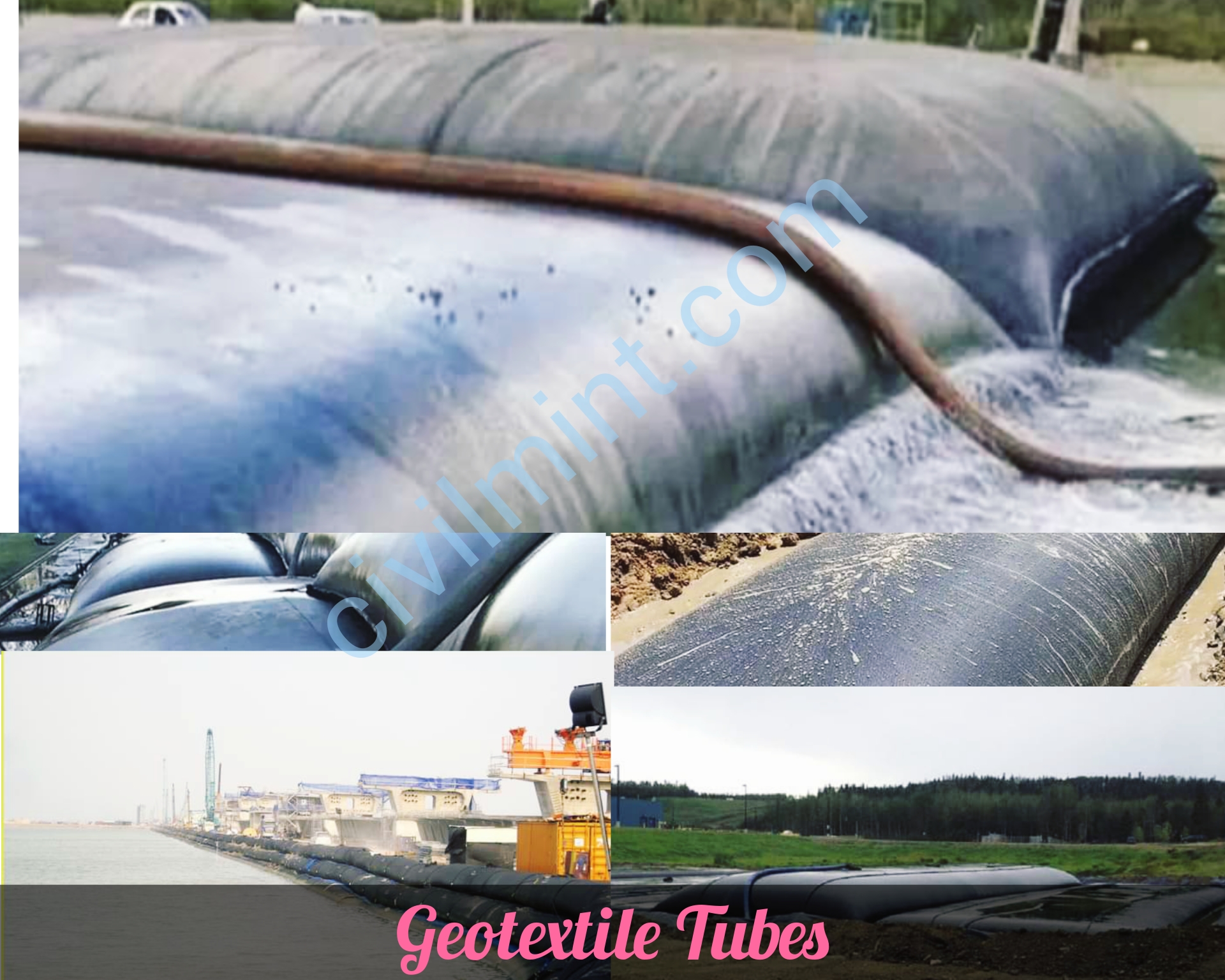Table of Contents
What Is Geotextile Tube?
A geotextile tube, scientifically referred to as a “geotube”, is a large, cylindrical bag made of permeable geotextile material. This fabric allows water to pass through while retaining solid particles. Employed primarily in civil engineering and environmental contexts, geotextile tubes aid in drainage, prevention, and erosion control efforts.
In coastal engineering, these tubes are used as artificial structures such as breakwaters, dunes or embankments. Filled with a slurry mix consisting of sand and water, geotextile tubes are strategically positioned along shorelines to reduce wave energy, preventing coastal erosion. They also promote the establishment of oyster reefs and provide containment for newly excavated material. In addition, geotextile tubes are an integral part of land reclamation projects and are installed transiently during the dewatering phase of dredging operations.
While geotextile tubes offer strength benefits, they can be susceptible to cracking when exposed to environmental elements. Minimizing this risk requires protective measures to ensure their structural integrity.
Applications Of Geotextile Tube
1. Coast and Beach Protection:
Geotextile pipes are often used as part of coastal protection systems. They can be filled with sand or other materials and placed strategically along coastlines to form barriers that absorb wave energy, prevent erosion, and protect against storm surges. These pipes create a buffer zone that reduces the impact of waves on sensitive coastal areas.
2. Dewatering and Sludge Containment:
Geotextile pipes are used for dewatering operations, the separation of liquids from solids. When sludge or sediment laden water is pumped into the pipes, the water passes through the geotextile fabric while retaining the solids. The dehydrated solids can then be disposed of more efficiently, reducing volume and facilitating proper disposal or reuse of the solids.
3. Erosion Control:
In erosion-prone areas, geotextile pipes can be used to stabilize slopes, shorelines, and embankments. These pipes prevent soil movement and surface erosion by creating a stable surface that resists the erosive forces of water runoff and wind.
4. Breakwaters and gully:
Geotextile tubes can be stacked in rows to create breakwaters, which are offshore structures designed to reduce wave energy and protect coastlines from erosion. Similarly, canyons can be created using geotextile pipes to interrupt the movement of sand and sediment along beaches, helping to preserve beaches.
4. Environmental Remediation:
Geotextile pipes are used in environmental clean-up efforts, particularly in the containment and isolation of contaminated materials. By encapsulating hazardous materials, these tubes prevent their spread and facilitate safer handling processes.
5. Beach feeding:
Geotextile tubes filled with sand or soil are placed along eroded shores to restore or enhance their width and volume. These tubes serve as a temporary or semi-permanent solution, supporting tourism, habitat restoration, and coastal aesthetics.
6. Land reclamation:
In areas where land needs to be constructed or expanded, geotextile pipes can be used to form the framework for new land masses. By strategically filling and stacking pipes, land reclamation projects can be undertaken to extend coastlines or create artificial islands.
7. Water Storage:
Geotextile pipes can function as temporary or semi-permanent water storage buildings. They can be deployed in flood-prone areas to temporarily store excess water, and prevent flooding downstream. In addition, they are used in irrigation systems to store water, allowing for controlled distribution over agricultural fields.
8. Pipeline and cable protection:
Underwater pipelines and cables are vulnerable to damage from currents, sediment movement, and other factors. Geotextile tubes can be wrapped around these infrastructure elements to provide a protective layer, reduce corrosion risk and extend their lifespan.
9. Waste Containment:
Geotextile pipes play an important role in containing hazardous waste and preventing its interaction with the environment. By encapsulating waste materials, these pipes reduce the potential for soil and groundwater contamination, which enhances overall environmental safety.
10. Agricultural Applications:
Geotextile pipes are used in agriculture to create water retention structures such as ponds or tanks. These structures help farmers manage the water supply for irrigation, livestock, and other agricultural activities. They can also be used to control the flow of water within fields, ensuring optimal soil moisture levels.
11. Temporary Structures:
Geotextile pipes can be used to build temporary structures such as retaining walls and embankments. In emergencies, such as floods, these pipes can be rapidly deployed to create effective flood barriers, protecting communities and infrastructure from water damage.
You might also like: Cellular Confinement System
Advantages Of Geotextile Tube
- Geotextile-based design for efficient flow
- Clear water discharge aids reuse
- Customizable, saving land space
- Stackable, portable for convenience
- Easy removal and emptying
- Versatile, eco-friendly solution
- Strong textile withstands weather
- Geotextile construction ensures safety
- Cost-effective, easy maintenance

